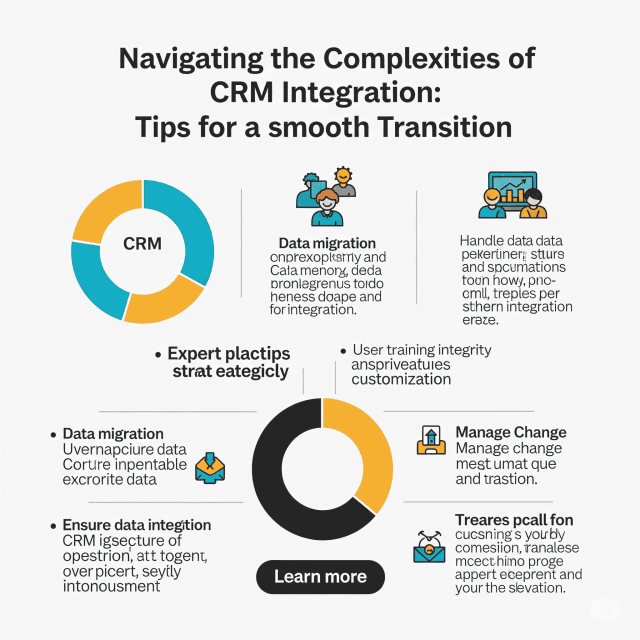Customer Relationship Management (CRM) systems are vital in today’s business landscape, offering companies a strategic way to manage interactions with customers and prospects. However, integrating a new CRM system can be a daunting process fraught with challenges. Here’s a comprehensive guide to help you navigate the complexities of CRM integration and ensure a seamless transition.
Understanding CRM Integration
CRM integration involves synchronizing the CRM system with other business applications, such as marketing automation, e-commerce platforms, and ERP systems. This allows for better data sharing and improved operational efficiency. The complexities arise from varying data formats, differing software capabilities, and the need for meticulous project management.
Key Considerations for Successful Integration
1. Define Clear Objectives
Before diving into integration, establish clear objectives. Determine what you want to achieve with the CRM system, whether it’s improving customer service, streamlining sales processes, or gaining insights through data analytics. Having well-defined goals will guide the integration process and ensure that everyone on your team is aligned.
2. Evaluate Existing Infrastructure
Assess your organization’s current technology stack. Understand your existing systems and identify any gaps that the new CRM should fill. This evaluation will help you determine compatibility and potential challenges during integration, allowing for strategic planning.
3. Choose the Right CRM
Selecting a CRM that aligns with your business needs is crucial. Consider ease of use, customization options, and integration capabilities with your existing applications. Platforms like Salesforce, HubSpot, and Microsoft Dynamics offer various features, but the right choice depends on your specific requirements and budget.
4. Engage Stakeholders Early
Incorporate input from key stakeholders early in the process. Involving team members from sales, marketing, customer service, and IT can provide valuable insights and foster a sense of ownership. This cross-functional collaboration will enhance buy-in and improve the chances of a smooth integration.
5. Create a Comprehensive Integration Plan
Develop a detailed integration plan outlining timelines, responsibilities, and milestones. This plan should address:
- Data mapping: Identify which data needs to be migrated and how it will be structured in the new system.
- Testing: Schedule sufficient time for testing integrations to ensure functionality and data accuracy.
- Training: Allocate resources for team training to ensure everyone is comfortable using the new system.
6. Prioritize Data Quality
Data quality is paramount during the integration process. Clean existing data before migration to avoid carrying over inaccuracies. Regularly audit and maintain data quality post-integration to ensure reliable insights and reporting.
7. Embrace Agile Methodologies
Adopting agile methodologies can enhance flexibility during integration. This approach allows teams to adapt to changes quickly, easily accommodate feedback, and make iterative improvements. Agile integration fosters a more responsive environment and helps address unexpected challenges.
8. Provide Comprehensive Training
Training is a critical component of successful CRM integration. Offer ongoing training sessions that cater to different user groups within your organization. Create user manuals, video tutorials, and access to support resources to ensure everyone is on board and confident in using the new system.
9. Monitor and Evaluate Performance
After the CRM is live, continuously monitor its performance against the objectives established at the beginning. Utilize analytics and feedback tools to assess user adoption, data accuracy, and the overall impact on business operations. Regular evaluations allow for timely adjustments and optimizations.
10. Foster a Culture of Adaptability
Finally, foster a culture of adaptability within your organization. Encourage feedback and be open to making changes based on user experiences. An adaptable mindset will prepare your team for future updates or system changes, ensuring long-term success with the CRM.
Conclusion
Integrating a CRM system into your organization is a complex task that requires careful planning and execution. By defining clear objectives, involving stakeholders, prioritizing data quality, and providing comprehensive training, you can navigate the intricacies of CRM integration smoothly. Remember, successful integration is not just about technology; it’s about people. With the right approach, you can transform your CRM into a powerful tool that enhances customer relationships and drives growth.









